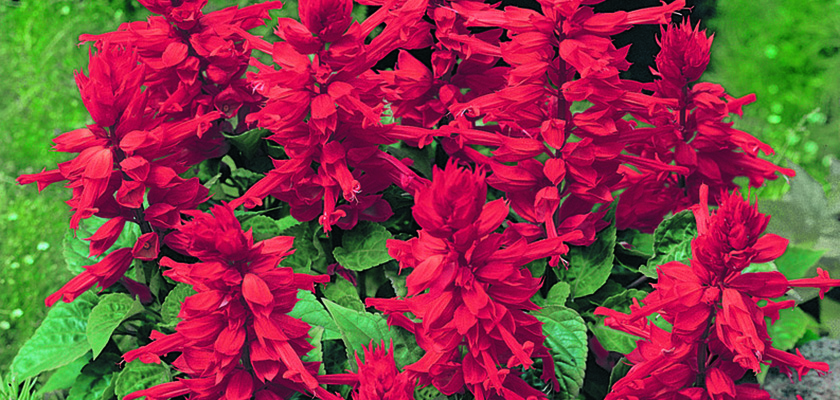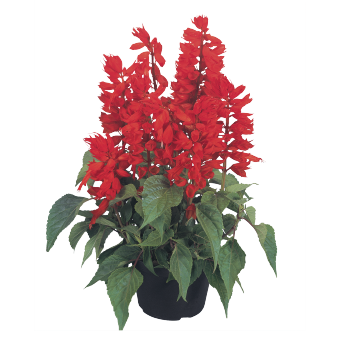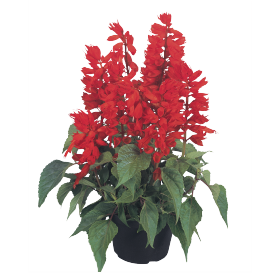

Salvano
- Vivid red flowers on dense spikes
- Basal branching
- Perfect for plantings in beds and borders
- Excellent weather tolerance and garden performance
- Crop Time
- Frühjahr: 9 - 10 Wochen
- Höhe ∅
- 28 cm
- Standort
- Sun - Partial shade
- Seed Form
- Roh
- Product Use
- Beet und Balkon, Landschaft, Topfpflanze
Technical guide
Verwendung
Plant for bedding or border, summer pot plant
Aussaattermin
February-April for flowering in pots from April onwards; June for flowering in pots from August onwards
Kornablage
2-3 seeds per plug, sowing directly into pot is recommended
Keimbedingung
12-15 days at 72-75 °F (22-24 °C). Light is required for germination.
Topfen
Transplant plugs after 5-6 weeks. Grow on at 60-65 °F (15-18 °C).
Medien
Use a well-drained, growing perennial substrate with 0-15 % clay, 0-15 % parts (e. g. bark, wood fibres, perlite), 1-3 kg/m³ complete balanced fertilizer, 0-2 kg/m³ slow release fertilizer (3-6 months), iron-chelate, micronutrients, pH: 5.5-6.5.
Temperatur
Grow at 21-24 °C during daytime and at 13-16 °C during night. To the harden the plants for selling the temperature can be decreased to 12-14 °C. S. splendens does not tolerate frost.
Düngung
Moderate-high fertilization levels are required. Fertilize the crop weekly with 200-250 ppm nitrogen (at 0 kg/m³ slow release fertilizer in substrate), using a complete balanced fertilizer. Avoid high ammonium and high nitrogen levels. Prevent magnesium deficiency by applying magnesium sulphate (0,05 %) 1-2 times and in case of iron deficiency (above pH 6.0) apply iron-chelate 1-2 times. The roots are sensitive to high salt levels in substrates. Avoid high fertilizer concentrations, it is advisable to fertilize several times with low concentrations weekly.
Stage I Starts with the radicle breaking through the testa. The roots are touching the medium. Ends with fully developed cotyledons.
Stage II Starts from fully developed cotyledons. Ends with the fully developed true leaf or true leaf pair.
Stage III Starts from the fully developed true leaf or true leaf pair and ends with 80% of the young plants being marketable.
Stage IV All young plants are ready for sale and in the process of being hardened off. This stage lasts about 7 days.
The cultural recommendations are based on results from trials conducted under Central European conditions. Different conditions in other parts of the world may lead to deviations in results achieved.
